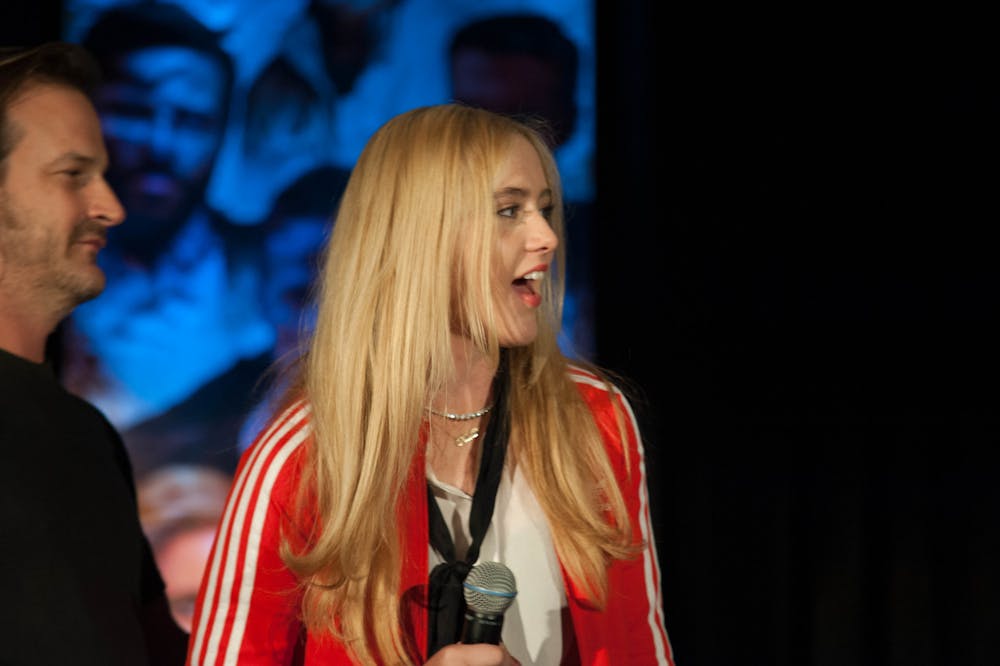Amazon’s latest film release, The Map of Tiny Perfect Things, is not quite what you’d expect. Though it has the look of a typical coming-of-age comedy, or perhaps just an uninspired rendition of Groundhog Day, it turns out to be neither.
The film is based on a fairly head-scratching premise: Two 17-year-olds, Mark (Kyle Allen) and Margaret (Kathryn Newton), decide to create a map of all the perfect things that happen in their town after both are stuck in the same day forever.
Put off by the outlandish premise or not, the very first sequence won’t fail to draw you in. Mark, evidently having been in the time loop for a while, starts his day by anticipating everything his dad (Josh Hamilton) and sister (Cleo Fraser) say or do.
He then — skipping out on summer school — spends the rest of the day doing the same to everyone he meets in town: giving directions before being asked, having the winning lottery numbers and experiencing other random but extremely well-rehearsed activities. The balance of intrigue and humor perfectly sets the tone for what’s to come.
We soon find out that Mark’s objective each day is to impress a cute girl by the pool, and even with countless tries so far, he has yet to succeed. One fateful afternoon, however, his shenanigans are interrupted by a girl he’s never seen, appearing to act with the same free will that he has. With this, his goal shifts to find her, someone who could potentially be his companion in his prison of time.
This girl, of course, turns out to be Margaret. After her initial reluctance, the two strike up a friendship that mainly revolves around showing each other the moments they’ve found in the loop, such as a skater landing a cool trick or an eagle snatching a fish with perfect timing.
From here, the idea to make the titular map is born. There seemingly isn’t much purpose associated with this mission, apart from being a somewhat more meaningful way to pass the time. Wholesome moments (like traffic stopping to let a turtle cross), uplifting ones (like a janitor’s piano solo), and simply funny ones (like a tennis ball mishap) all make it into the map.
As the pair inevitably grows closer, their entertaining back-and-forth banter becomes one of the film’s strengths. Both characters are easy to relate to and easy to love. But while Mark is an open book, Margaret can’t quite get herself to fully confide in him. To add insult to injury, she mysteriously has to leave at the same time every day.
As the story moves forward, the backstories of both characters are slowly unveiled. Mark is at a crossroads, torn between his true passion, art school, and the road more traveled, traditional college. Within this, he isn’t quite sure who he is either; Margaret’s cheeky remark about him being “a nerd who sucks at math” comes to mind. Each day, he avoids a dreaded talk with his dad about his future but eventually gets a wake-up call of sorts from his younger sister.
Margaret, in contrast, has her career ambitions figured out, knowing with certainty that she wants to be a NASA mission specialist. But later, when the source of her disappearances comes to light, it’s clear that her life is no less complicated. She too is at a crossroads, and just might prefer to stay in the time loop — while Mark desperately wants out.
Although it drags a bit in the middle, for the most part the story moves briskly and the dialogue delightfully keeps up. However, some lines don’t always hit the mark and others aren’t entirely devoid of clichés. The foremost one the film suffers from is the romance subplot — whatever you think will happen, happens. It’s one of the only elements that stays stagnant, unfortunately exempt from the fresh take applied to most everything else.
On the other hand, the film really starts to ramp up when it ventures into sci-fi territory. Margaret excitedly talks about searching for the fourth dimension and introduces us to a 4D cube by drawing it onto a storefront window. Meanwhile, Mark quizzes his summer school algebra teacher, of all people, about singularities in a bid to escape the temporal anomaly. By the end, unfortunately, all of the science goes out the window, creating a less-than-believable resolution which elects to leave things mostly unexplained.
The film’s latter half may not have been as promising as the rest, but it nonetheless succeeds as one of the rare movies that manages to be both funny and thought-provoking — and in just the right amounts. If anything, the long takes combined with downright sublime choreography make it a memorable watch. It’s also a one-of-a-kind twist on a classic narrative. Without a doubt, flaws and all, there’s a lot to like in this quirkily imaginative tale.





